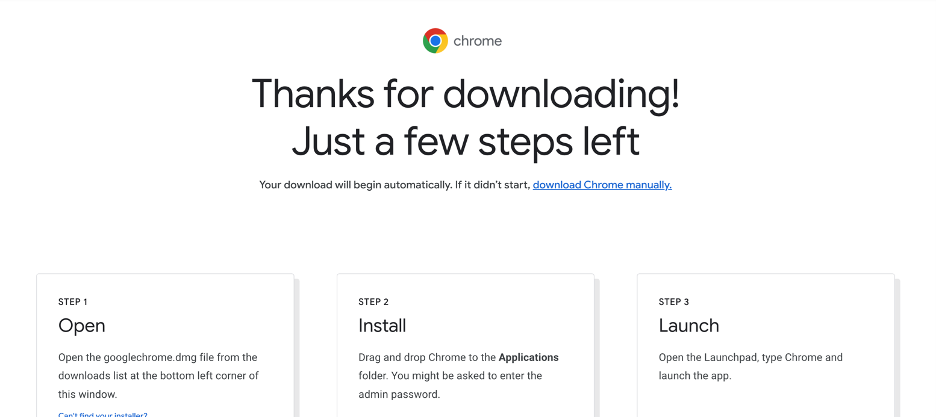
Have you ever heard of the spoons theory? Originating in the chronic illness community, it’s a way of framing a person’s daily energy and output measured in spoons. For instance, a person may wake up with 10 spoons in their drawer. Getting ready for work and their daily routines takes one spoon, their commute requires another, they have a grueling workday with back-to-back meetings and by the time they’re off of work six more spoons are gone, then grocery shopping takes another, and meal prep takes the final spoon, depleting their day’s 10 spoons. And no matter who you are, everyone needs spoons for things like helping kids with homework, getting to the gym, making dinner, or researching that upcoming vacation.
For neurodivergent individuals, or anyone experiencing acute stress, anxiety, depression, or neurological conditions such as a migraine or brain injury, a routine task (like completing a purchase on your website) may take significantly more spoons than it would for a neurotypical individual. Or it may require the same number of spoons to complete the task itself, but they woke up with fewer spoons comparatively, so the task requires a greater percentage of their overall spoons in a given day. Minimizing this detrimental impact to users requires a human-centered approach, known as inclusive design.
What Do We Mean By Neurodivergence and Inclusive Design?
Before we dive in, let’s establish what we mean when we talk about neurodiversity, neurodivergence, accessible design, and inclusive design. Neurodiversity acknowledges that everyone’s brain is different, and there is no “normal.” However, a neurodivergent individual is a person moving through a world that is not designed for the way they think or perceive.
Neurodivergent (ND) people often have to work that much harder to operate in spaces that are designed for “typical” brains, including your online space. Conditions associated with neurodivergence can include ADHD, Autism spectrum disorders, dyslexia, Down Syndrome, and more. For ND individuals, navigating a world designed for neurotypical brains can be exhausting, so reducing cognitive load is a recurring theme in designing for neurodivergence.
Accessibility literally means access and is more about achieving a “baseline” level of access for people with disabilities. It also tends to focus on meeting specific criteria like following Web Content Accessibility Guidelines or ADA compliance. Accessibility is imperative but it is not the entire picture, nor is it where you should stop.
Inclusive design aims to go beyond these specific accessibility benchmarks and create experiences that can be fully appreciated by a wider variety of people. It requires incorporating empathy and compassion for all kinds of users as part of the product design process. Instead of focusing only on required, functional objectives, inclusive design thinks holistically about a wide variety of struggles a user may experience and how your product can meet the user where they are.
Making Your Design More Inclusive
While inclusive design is key for supporting neurodivergent users, it also aids anyone experiencing situational or temporary impairment. Consider those customers who may be interacting with your site on a particularly stressful day, while recovering from a minor concussion, in a highly distracting environment, while multitasking, or during the throes of a bad breakup — pretty much anyone at some point! So what are some ways we can take a human-first approach to design?
Design kinder task flows.
Executive dysfunction — which occurs when the brain has difficulty with memory, attention, or cognitive processing — can make starting or completing a string of tasks difficult. Consider these tips for improving your various task flows with executive dysfunction in mind.
- Use process indicators for multi-step tasks, such as checking out or updating account settings, to reveal the required steps users must take and reward the user for progressing to the next step.
- Allow users to save and return to a task, when possible. Clearly define how long a process will take and if something cannot be saved part of the way through.
- Don’t be afraid to use supportive language like “just one more step.”

- Reduce friction or additional steps whenever possible.
- Consider the value proposition to your user at every step of the process. The less obvious or immediate value to the user, the fewer hoops they will be willing to jump through to accomplish a task. This is even more prevalent for anyone with executive dysfunction or low frustration tolerance.
Design interactions with everyone in mind.
The smallest amount of visual feedback, motion, haptics, or audio — when done well — can greatly enhance your interface without overloading your users with sensory input. Consider these tips when designing user interactions.
- Provide useful error messages and explainer text, and allow users to go back or undo their actions whenever possible. For anyone experiencing executive dysfunction or operating while distracted, it can be incredibly easy to miss key details or required input, making proper error handling extremely helpful.
- Avoid too much animation at one time. Animated interface elements like button hover effects, modal windows, or drop-down menus should behave predictably and conventionally.
- Match the “size” of the feedback to the triggering interaction. Animation for microinteractions provides important audio or visual feedback when users take an action, but it should be seamless and in balance with the effort taken by the user. For instance, clicking a bookmark icon does not call for a large or lengthy animation.
Be aware of visual processing.
Sighted people, in general, process visual information exponentially faster than reading text. And for neurodivergent folks like those with dyslexia, visual processing is not only faster, but carries a much lower cognitive load. Consider the following when leaning into visual design.
- Know that color is not just about contrast! People with different sensory processing experiences can find very bright or strong colors jarring, uncomfortable, or distracting. Regardless of your brand, most websites benefit from “clean and simple” design that uses color sparingly and intentionally.
- Offer options like dark mode or “themes” that can make interacting with your content more enjoyable for those on the Autism spectrum or those with some form of color blindness, among others.
- Use imagery to break up large amounts of text and use strong text hierarchy, line spacing, short paragraphs, and lists to make content scannable and easy to understand at a glance.
- Never underestimate strong and universal iconography.
- Use Gestalt principles to inform your layouts and organize content so it is aesthetically pleasing and easy to understand.
Keep auditory processing in mind, too.
Don’t forget about auditory processing in your design process. Whether someone is dealing with sensory overwhelm, experiences hearing loss, or is simply in the room with a sleeping baby or partner, being mindful of audio is a great example of design choices that open up your content to all kinds of people in all kinds of situations.
- Skip auto-play (or at least mute it). We all know that video auto-play is bad, right? Just to get that out of the way. If you must use auto-play, mute that content by default.
- Provide transcripts of video and audio content and/or offer closed captions. These steps make this content immediately accessible and inclusive not just to folks with hearing loss, but to anyone who doesn’t want to listen to or watch video content at that moment.
More on Accessibility From Our Team
Want more tips on accessible and inclusive design? If you’re looking for more guidance, we at PRI are here to help! Take a look at our other writings below and reach out to us today.
- Designing for Users On-the-Go: How to Make Your Website Accessible on Mobile Devices
- Why Accessibility Matters: Principles of WCAG Compliance
- Speak and Be Heard: How to Make Your Social Media Posts More Accessible
- Working With User-Accessible Colors







